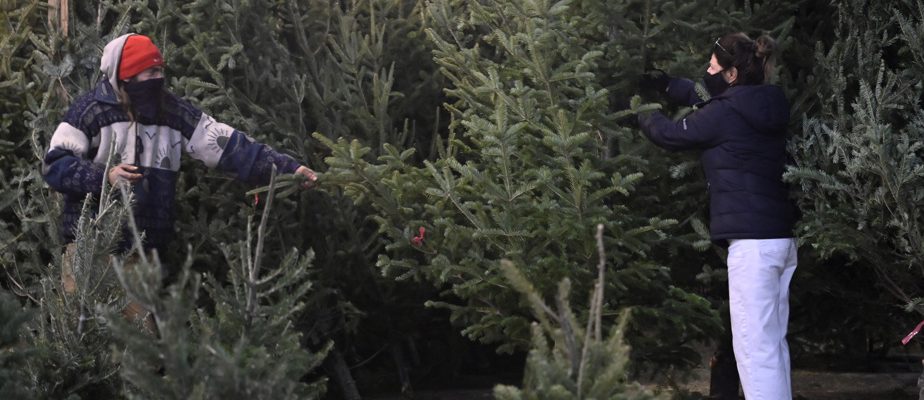1,504,736

PHOTO ALAIN ROBERGE, LA PRESSE ARCHIVES
The 2023 season looks good for exported Quebec trees.
Number of Quebec Christmas trees exported outside the country in 2022. This represents 63% of Canadian exports. The value of Quebec trees exported is $66 million. And the 2023 season looks good, says Hugo Cleary, administrator of the Association of Christmas Tree Producers of Quebec (APANQ). “Our producers say that demand is very strong,” says the latter. People see the benefits of natural trees. »
Natural or artificial?

PHOTO BERNARD BRAULT, LA PRESSE ARCHIVES
The natural tree has a lower carbon footprint than the artificial tree.
Precisely, each season brings back the eternal debate: natural or artificial, the tree? The David Suzuki Foundation recommends natural fir. Because the artificial tree has a higher carbon footprint due to its plastic components. In addition, it is often manufactured abroad and its transport generates a lot of gas emissions. It must be kept for around twenty years for its carbon footprint to be acceptable. While natural fir captures its share of carbon.
From Massachusetts to Venezuela

PHOTO ANGELA WEISS, AGENCE FRANCE-PRESSE
A Christmas tree in front of the New York Stock Exchange building
Where do exported Quebec trees go? In 97% of cases, they are found in our neighbors to the South, mainly in New York State, Massachusetts and New Jersey. Other trees end up in homes in Central America (Panama), South America (Venezuela) and the Antilles (Barbados, Aruba, Curaçao).
First Estrie

PHOTO ALAIN ROBERGE, LA PRESSE ARCHIVES
Estrie has the most Christmas tree producers.
Christmas tree producers can be found in more than 10 Quebec regions. Estrie has the most operators. In 2022, 133 producers from the Eastern Townships exploited 6,210 hectares of trees, followed by 45 colleagues from Chaudière-Appalaches (2,291 hectares). In all, 272 producers cultivate fir trees on 9,437 hectares. Balsam and Fraser species are the most popular.
14 or 15 years old

PHOTO ROBERT SKINNER, LA PRESSE ARCHIVES
The fir trees are harvested between the end of October or November 20 and 25.
This is the age of Christmas trees coming to market, said Hugo Cleary, whose company Cleary Evergreens is located in Cookshire-Eaton. “I buy transplants that are 45 centimeters high and 4 or 5 years old,” he says. Once they are planted, they must be pruned every year, fertilized, etc. The harvest is done between the end of October and November 20 and 25. » So that the 1er December, the trees are ready for sale.
Nearly 200 tons

PHOTO ROBERT SKINNER, LA PRESSE ARCHIVES
In Montreal, thousands of trees are collected annually.
Once the holiday season is over, you recycle your tree. In Montreal, thousands of trees are collected annually, says spokesperson Philippe Sabourin. “In 2022, nearly 200 tons of trees will be collected, the equivalent of 12 STM buses,” he says. A few hundred trees are used to decorate public skating rinks. The vast majority is reduced to chips and used as fuel or sent to the company Arbressence, producer of essential oils. Collection ? It takes place in January. Montrealers must consult the montreal.ca website, click on the Info-Collecte tab and enter their postal code to have the collection dates by borough. You can also take them to ecocenters.
Sources: Association of Christmas Tree Producers of Quebec, Ministry of Agriculture, Fisheries and Food of Quebec, Global Trade Tracker, City of Montreal
